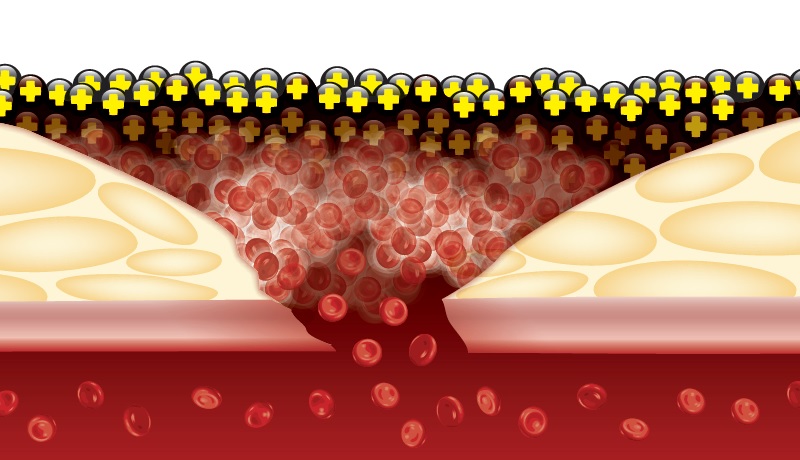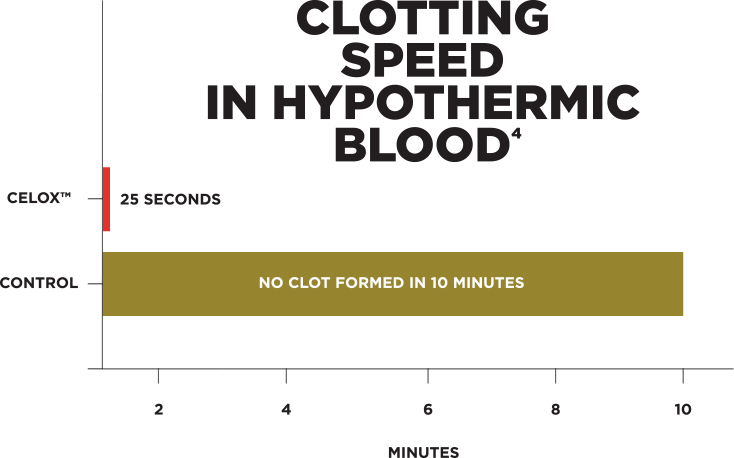How Celox Works
Celox™ blood clotting granules are actually very high surface area flakes. When they come in contact with blood, Celox™ swells, gels, and sticks together to make a gel like plug, without generating any heat. Celox™ blood clotting agent does not set off the normal clotting cascade, it only clots the blood it comes directly into contact with.
This mode of action has a number of major benefits:
- Clots hypothermic blood1.
- Clots blood treated with blood-thinning drugs (Heparin, Warfarin or Coumadin1.
- No heat generated1.
- Celox is easily removed from the wound37.

Celox works on hypothermic (cold) blood
Severe traumatic blood loss quickly leads to the victim becoming hypothermic, irrespective of the outside temperature. Hypothermic blood is coagulopathic (does not clot normally) and so becomes harder to stop.
Because of the way Celox works, it is just as effective in stopping bleeding in hypothermic blood as it is in normal temperature blood and independent testing33 confirms this.

Blood thinners (anticoagulants) and anti-platelet therapy
Celox Granules work even where there is Heparin or Warfarin (Coumadin) in the blood. An increasing number of people are on anticoagulants, presenting an extra challenge if they are injured. Celox has been tested and shown to clot heparinized blood.1 Further independent laboratory tests have been published using Celox on blood containing heparin or warfarin.33, 34
There are published human results on blood with severe coagulation problems 35. Note: some of these are cases where the product was used outside of cleared indications and are provided for information only.
“Celox simply clots the blood once it comes directly into contact with it, thus not setting off the normal clotting cascade. Since chitosan works independently from the physiological clotting mechanisms, it has also been proved to work in the presence of common anti-coagulants such as warfarin as well as in the presence of heparin”
Quoted from Muzzi et al 2012(reference 35).
No Heat
Celox blood clotting agents do not produce any heat at all in use, unlike some mineral-based hemostats.


